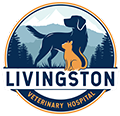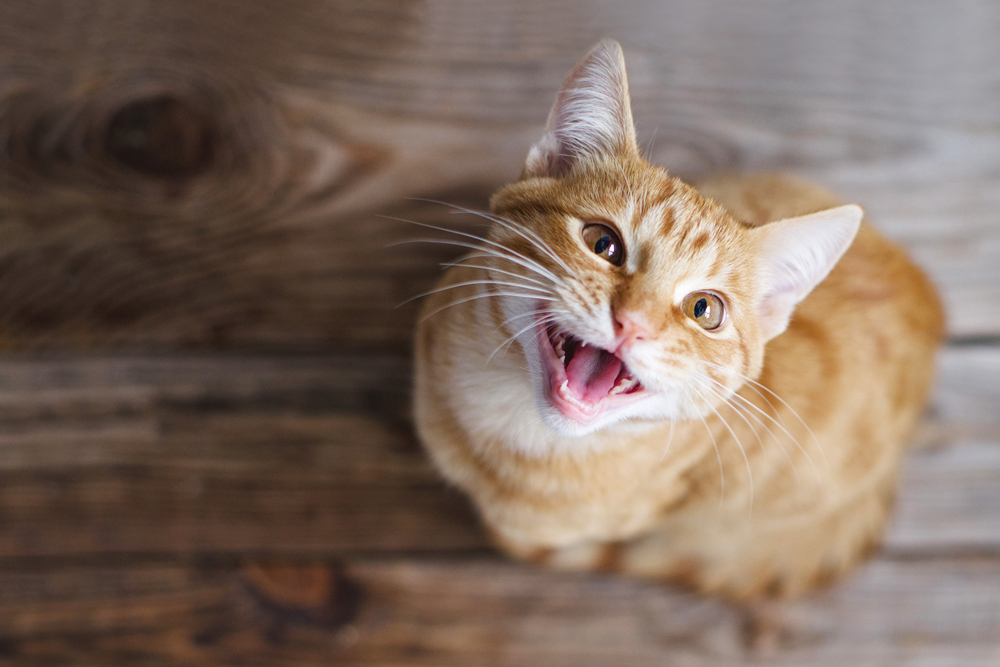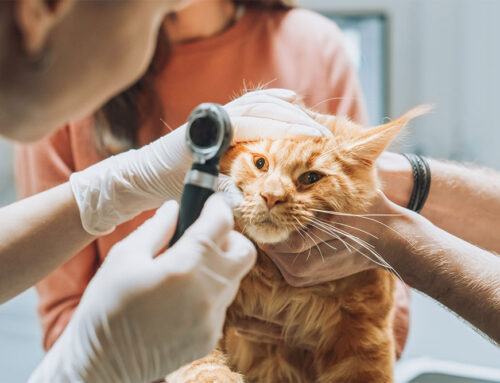When you think about your pet’s health care, you likely consider their annual wellness exam at Livingston Veterinary Hospital, nutritious food, parasite prevention, regular grooming, and daily exercise. But, are you missing something that is right under their nose? If so, it’s time to lift the lip on dental health and incorporate oral care into your pet’s wellness routine.
In recognition of National Pet Dental Health Month, we provide five simple ways to improve your pet’s dental health—and potentially add years to their life.
Read my lips—why your pet’s dental health matters
Periodontal disease (i.e., dental disease) affects about 80% of pets by the time they’re 3 years old. At first, the disease is mostly invisible, as bacteria form in plaque and tartar and sneak below the gum line—where the true damage takes place. The bacteria attack the tooth root and surrounding soft tissue and bone, causing periodontal disease that, left untreated, has devastating oral consequences, including:
- Pain
- Fractured teeth
- Infection
- Swelling
- Bone erosion
- Tooth decay and loss
- Jaw fracture
As if that weren’t enough, the bacteria from periodontal disease also enter the bloodstream and travel to other places, causing permanent harm, such as:
- Kidney damage
- Liver damage
- Myocarditis (i.e., heart muscle inflammation)
In pets previously diagnosed with kidney insufficiency, periodontal disease can accelerate this progressive condition.
Get proactive against periodontal disease in pets
Periodontal disease has had the upper hand—er, paw?—for far too long. By taking these five steps to proactively maintain or restore your pet’s dental health, you can push back this microscopic menace, and improve your pet’s quality of life.
#1: Recognize the early warning signs of pet periodontal disease
Dental disease is subtle in its earliest stages, and still requires a trained eye—and dental X-rays—to be identified at stage two and three. Unfortunately, by the time dental calculus (i.e., the visible tartar) and other obvious signs appear, periodontal disease has reached stage four, and multiple tooth extractions are necessary.
Early identification by pet owners can reduce or prevent pain, and prevent periodontal disease from reaching stage four. Check your pet’s mouth at least weekly for warning signs, including:
- Bad breath
- Swollen or red gums (i.e., gingivitis)
- Discolored gums or teeth
- Sensitivity
- Unusual drooling or dropping food
- Bleeding from the mouth
- Visibly broken or damaged teeth
- Facial or eye swelling
General observations, such as weight loss, changes in eating or chewing habits, pawing at or rubbing the face, are also cause for concern. If you notice any of these signs, contact Livingston Veterinary Hospital for a dental consultation.
#2: Keep up with your pet’s preventive care
Annual visits to our hospital ensure your pet’s teeth and gums are evaluated by our veterinarian, who may note subtle signs of swelling, gingivitis, gum recession (i.e., loss), and tooth fracture.
Yearly check-ups can also ensure us that your home-care routine is on the right track, or that you need to schedule your pet’s annual dental cleaning before any disease can progress further. As with our own dental health, routine cleanings now can prevent costly and painful future treatments.
#3: Have your pet’s teeth cleaned annually
Dental cleaning under anesthesia, also known as a dental prophylaxis or comprehensive oral health assessment and treatment (COHAT)—if you’re feeling long-winded—is the only effective way to remove plaque and tartar below the gum line and treat periodontal disease. While many pet owners have reservations, anesthesia is necessary for both pet and team safety, and allows us to perform advanced diagnostics inside the oral cavity, including:
- Full-mouth dental X-rays
- Oral cavity exam
- Tooth scaling
- Tooth polishing
- Dental charting
- Extractions or oral surgery
- Additional treatments or therapies
As with any anesthetic event, patient safety is our number one priority. Our approach to safe anesthesia includes:
- Preanesthetic blood work
- Intravenous catheter
- Intubation
- Gas anesthesia, to maintain appropriate sedation
- Local anesthesia for painful procedures
- State-of-the-art electronic monitoring
- Dedicated veterinary technician, to monitor your pet’s anesthesia from induction to recovery
#4: Create a pet dental care routine

Like any habit, pet dental care is most effective when practiced regularly. Selecting one method for reducing plaque and tartar, and then adding that to something you already do, can make you more likely to stick with the new habit and have more success. For example, if you decide to use dental chews, give your dog a chew every morning when you have your coffee—don’t worry, your dog won’t let you forget!
Options for dental home care are expanding, but no matter which method you choose, always look for the Veterinary Oral Health Council (VOHC) seal, to ensure the product has been tested and meets its label claims. Or, simply ask us for a recommendation. Popular home care methods include:
- Toothbrushing — Use only pet-safe—never human—toothpaste.
- Dental diets — Prescription pet foods (e.g., Hills T/D) are designed to scrub the tooth’s surface as your pet chews.
- Dental chews and treats — VOHC-approved favorites include C.E.T VeggieDent, Greenies treats and chews, and Whimzees Brushzees.
- Tooth wipes and gels — Some owners find these easier to use and better tolerated by their pet than brushing.
- Water additives — If your pet prefers a hands-off approach to oral hygiene, water additives can reduce oral bacteria and prevent plaque accumulation.
Dental care is an essential part of your dog or cat’s physical health. Keep everyone smiling by taking proactive steps toward pet dental wellness with our four simple tips. For additional information, or to schedule a dental consultation, contact Livingston Veterinary Hospital.







Leave A Comment